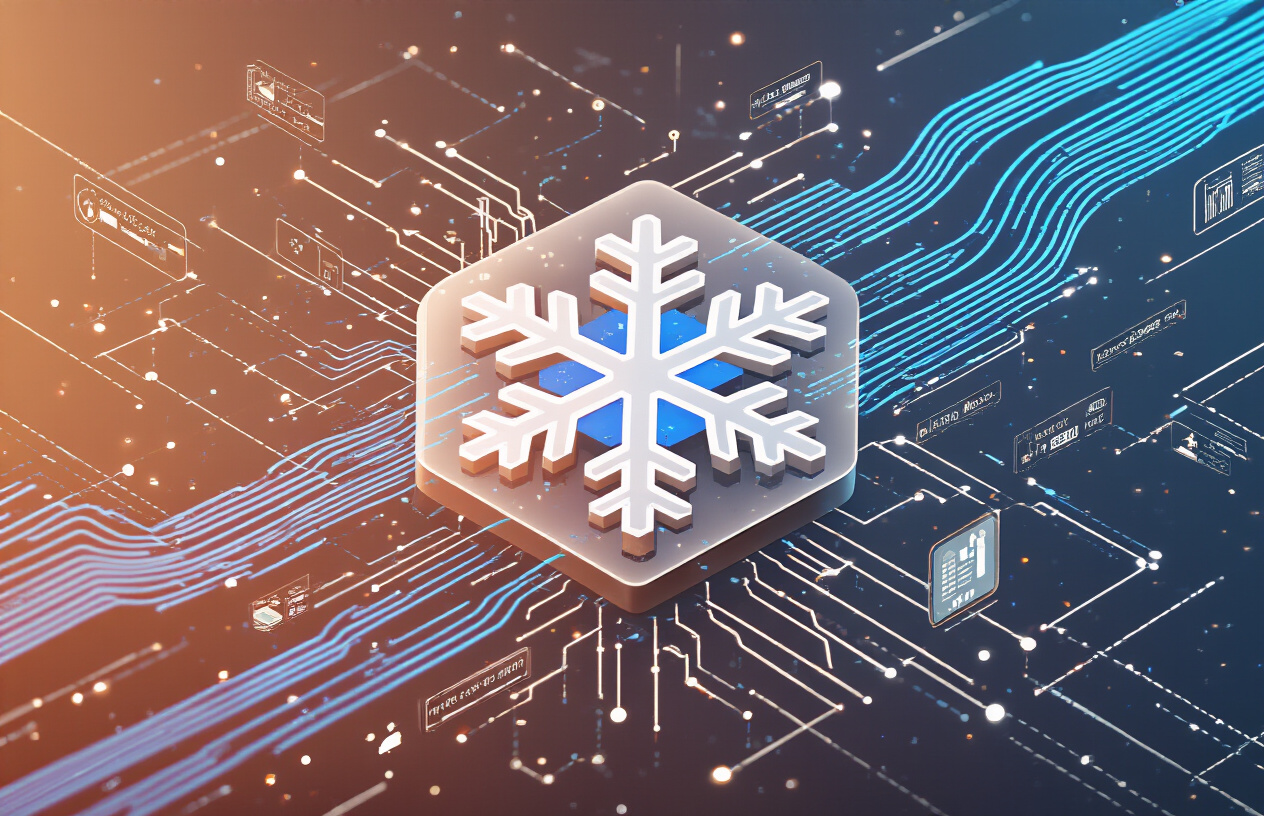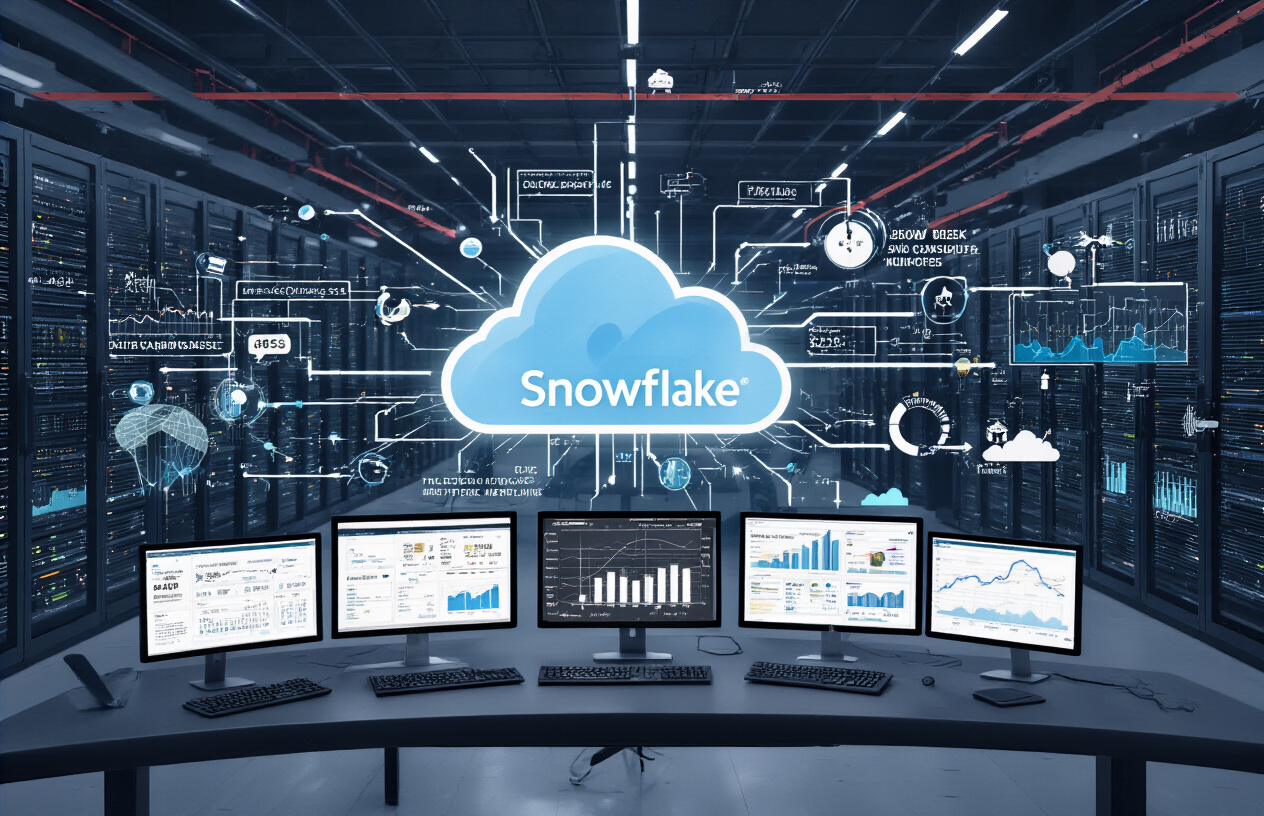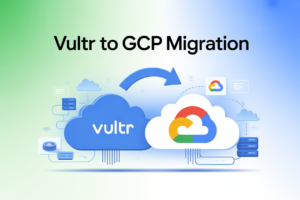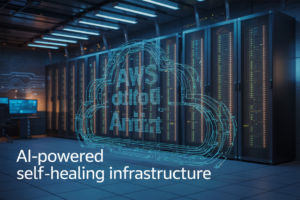Data engineers and analytics professionals who need fresh data in their Snowflake environment will find Snowpipe essential for continuous data ingestion. This guide explores how Snowpipe works within Snowflake’s data platform to enable real-time analytics without complex batch processing. We’ll cover the fundamentals of setting up your first Snowpipe and share performance optimization techniques that keep your data flowing smoothly.
Understanding Real-Time Data in Modern Analytics

The Business Value of Real-Time Data Processing
Gone are the days when businesses could wait hours or days for data insights. In today’s fast-paced markets, waiting even minutes can mean missed opportunities.
Real-time data processing delivers immediate ROI in ways that might surprise you:
- Instant fraud detection – Financial institutions catch suspicious transactions while they’re happening, not after the money’s gone
- Dynamic pricing – Retailers adjust prices based on demand, inventory, and competitor moves in seconds
- Supply chain optimization – Companies reroute shipments and adjust production based on real-time disruptions
- Customer experience personalization – Services tailor experiences based on what users are doing right now, not what they did yesterday
A major retail client of mine increased conversion rates by 23% just by implementing real-time inventory and pricing updates. That’s real money on the table.
Challenges of Traditional Batch Processing
Batch processing feels like driving while only looking in the rearview mirror. You’re seeing where you’ve been, not where you’re going.
The traditional approach comes with serious limitations:
- Data arrives too late for timely decisions
- Processing windows create blind spots
- Resource-intensive jobs compete for system resources
- Error recovery means waiting for the next batch window
- Scaling requires significant infrastructure changes
Most companies still run critical processes in overnight batches, then wonder why they can’t respond to market changes fast enough.
How Real-Time Data Transforms Decision Making
Real-time data doesn’t just speed things up—it fundamentally changes how decisions get made.
When data flows continuously:
- Dashboards become mission control centers rather than historical reports
- Anomaly detection happens automatically, flagging issues before humans notice them
- A/B testing provides immediate feedback, not post-mortem analysis
- Algorithmic decisions can happen thousands of times per second
- Entire workflows transform from reactive to proactive
Key Requirements for Effective Streaming Solutions
Not all streaming solutions are created equal. The ones that deliver real business value share these critical capabilities:
- Low latency processing – Data needs to be actionable in milliseconds, not seconds
- Fault tolerance – Systems must handle failures gracefully without data loss
- Exactly-once semantics – Ensuring operations happen once and only once
- Horizontal scalability – The ability to handle sudden volume spikes
- Schema evolution support – Data structures change; your system should adapt
- Simple integration – Connecting to existing data sources and destinations
- Robust monitoring – You can’t manage what you can’t measure
This is where Snowpipe enters the picture—but I’m getting ahead of myself.
Snowflake’s Data Platform Capabilities

Core Snowflake Architecture Overview
Snowflake isn’t just another database – it’s a complete rethinking of how cloud data platforms should work. At its heart, Snowflake separates compute from storage, which means you can scale each independently (and save a ton of money in the process).
The architecture has three key layers:
- Storage Layer: Where your data lives, compressed and optimized in Snowflake’s proprietary format
- Compute Layer: Virtual warehouses that do all the heavy lifting when you query data
- Cloud Services Layer: The brain of the operation, handling authentication, metadata, and query optimization
What makes this setup brilliant? You can spin up multiple warehouses against the same data without any resource contention. Your finance team can run complex reports while your data scientists train ML models – all on the same tables, at the same time, without slowing each other down.
How Snowflake Handles Data Ingestion
Getting data into Snowflake isn’t a one-size-fits-all affair. The platform gives you options:
- COPY commands: The classic approach – point to your staged files and load them in
- Snowpipe: Snowflake’s near real-time continuous loading service (the star of our show today)
- External tables: Query your data where it sits without moving it
- Partner integrations: Connect directly with tools like Fivetran, Matillion, or Airflow
The magic happens in how Snowflake optimizes these loads. Behind the scenes, it’s handling file parsing, compression/decompression, micro-partitioning, and metadata management automatically.
Comparing Batch vs. Streaming Options in Snowflake
Still loading data in big overnight batches? That approach is getting outdated fast.
| Feature | Batch Loading | Snowpipe (Streaming) |
|---|---|---|
| Frequency | Scheduled intervals | Continuous, near real-time |
| Latency | Minutes to hours | Seconds to minutes |
| Cost model | Warehouse runtime | Pay-per-file processed |
| Setup complexity | Simple | Moderate (requires event triggers) |
| Best for | Historical/large datasets | Real-time dashboards, fresh data needs |
The biggest difference? Batch loading needs a running warehouse, which means you’re paying even when idle. Snowpipe uses serverless resources that scale automatically with your ingestion needs.
For modern data teams, this isn’t really an either/or choice. Most Snowflake implementations use a hybrid approach – Snowpipe for time-sensitive data flows and batch loading for historical or less urgent data.
Introducing Snowpipe: Snowflake’s Continuous Data Ingestion Service

What Makes Snowpipe Different
Snowpipe isn’t just another data loading tool—it’s a game-changer. Unlike traditional batch loading processes that run on schedules, Snowpipe loads your data as it arrives. No waiting for the midnight job to run or manually triggering loads when you need fresh data.
Think about it: your data becomes available for analysis within minutes of being created. That’s the difference between reacting to yesterday’s news versus making decisions based on what’s happening right now.
Most ETL tools force you to choose between speed and scale. Snowpipe laughs at that false choice. It handles tiny JSON files just as efficiently as massive data dumps without breaking a sweat.
Key Features and Capabilities
Snowpipe brings some serious muscle to the data ingestion game:
- Automatic triggering: Set it up once and let cloud events trigger your loads
- Micro-batch processing: Small chunks processed continuously instead of waiting for big batches
- REST API access: Integrate with virtually any system that can make API calls
- File notification integration: Works with AWS S3, Google Cloud Storage, and Azure Blob notifications
- Serverless operation: No infrastructure to manage—Snowflake handles all compute resources
What’s crazy powerful is how Snowpipe separates compute from storage. Your ingestion processes don’t steal resources from your analysts running queries.
How Snowpipe Enables Near Real-Time Analytics
The gap between data creation and analysis has traditionally been hours or days. Snowpipe shrinks that to minutes.
Here’s what this means in practice:
- Detect fraud patterns as they emerge, not after the damage is done
- Update dashboards continuously throughout the day with fresh data
- Monitor IoT sensors with minimal latency
- Run AI models against the latest data, not stale information
The killer advantage? Your analysts don’t need to change their workflows. The data just shows up faster in the same tables they already query.
Supported Data Sources and Formats
Snowpipe plays nice with virtually every data format you’d want:
| Structured Formats | Semi-Structured Formats | Compression |
|---|---|---|
| CSV | JSON | GZIP |
| TSV | Avro | BZIP2 |
| Fixed Width | ORC | ZSTD |
| Parquet | XML | BRO |
Cloud storage platforms are Snowpipe’s bread and butter:
- Amazon S3
- Google Cloud Storage
- Microsoft Azure Blob Storage
- Internal stages
Plus, with the Snowflake Connector for Kafka, you can stream data directly from your Kafka topics.
Snowpipe’s Pricing Model Explained
Snowpipe’s pricing actually makes sense (shocking for enterprise software, I know).
You pay only for the compute resources used during data loading—no wasted idle time. The compute is measured in Snowpipe credits, separate from your regular Snowflake warehouses.
Small, frequent loads might cost more than batching files together, but the trade-off is worth it for time-sensitive data. For most organizations, the cost difference is negligible compared to the business value of fresher data.
What’s refreshing is there’s no charge for failed loads or data storage during processing. You pay only for successful ingestion.
Setting Up Your First Snowpipe

Prerequisites and Environment Setup
Ever tried building a house without a foundation? That’s what launching into Snowpipe feels like without the right setup. Before you dive in, make sure you’ve got:
- An active Snowflake account with admin privileges
- Cloud storage (AWS S3, Azure Blob, or GCP Cloud Storage)
- Proper IAM roles and permissions configured
- Snowflake CLI or SnowSQL installed locally
Here’s the thing – your cloud provider matters. If you’re using AWS, you’ll need an S3 bucket with the right policies. For Azure folks, it’s all about Blob Storage containers. The permissions setup looks different across platforms, but the end goal is the same: Snowflake needs to see your files.
# Example AWS policy snippet
{
"Version": "2012-10-17",
"Statement": [
{
"Effect": "Allow",
"Action": [
"s3:GetObject",
"s3:GetObjectVersion"
],
"Resource": "arn:aws:s3:::your-bucket-name/*"
}
]
}
Creating the Target Tables
Your Snowpipe is only as good as the table it feeds. This isn’t the place to wing it.
First, hop into your Snowflake worksheet and create a database and schema:
CREATE DATABASE IF NOT EXISTS snowpipe_demo;
USE DATABASE snowpipe_demo;
CREATE SCHEMA IF NOT EXISTS ingest;
USE SCHEMA ingest;
Now, create your target table with a structure that matches your incoming data:
CREATE OR REPLACE TABLE customer_data (
customer_id VARCHAR(36),
name VARCHAR(100),
email VARCHAR(100),
purchase_amount FLOAT,
transaction_date TIMESTAMP_NTZ
);
The secret sauce? Make sure your column types match your source data perfectly. Mismatches here will cause your pipe to clog faster than a hairball in the shower drain.
Configuring Auto-Ingest with Cloud Storage Events
Auto-ingest is where Snowpipe really shines. Instead of manually triggering loads, your cloud storage alerts Snowflake whenever new files arrive.
To set this up:
- Create a notification integration in Snowflake:
CREATE OR REPLACE NOTIFICATION INTEGRATION my_snowpipe_int
TYPE = QUEUE
NOTIFICATION_PROVIDER = AWS_SNS
ENABLED = TRUE
AWS_SNS_TOPIC_ARN = 'arn:aws:sns:us-west-2:123456789012:snowpipe-topic';
- Create the pipe that connects to your cloud storage:
CREATE OR REPLACE PIPE snowpipe_demo.ingest.customer_pipe
AUTO_INGEST = TRUE
AS
COPY INTO snowpipe_demo.ingest.customer_data
FROM @snowpipe_demo.ingest.customer_stage
FILE_FORMAT = (TYPE = 'CSV' FIELD_OPTIONALLY_ENCLOSED_BY = '"' SKIP_HEADER = 1);
- Configure your cloud storage event notification to trigger when new files arrive.
The beauty of auto-ingest? Set it and forget it. Your data flows in automatically, no babysitting required.
Manual vs. REST API Snowpipe Implementation
Not all Snowpipe setups are created equal. You’ve got options:
| Approach | Best For | Complexity | Control |
|---|---|---|---|
| Auto-ingest | Continuous data streams | Low | Hands-off |
| REST API | Custom pipelines, batched loading | Medium | Fine-grained |
| Manual | Testing, irregular loads | Low | Complete |
With manual implementation, you’re calling the shots directly:
ALTER PIPE snowpipe_demo.ingest.customer_pipe REFRESH;
But REST API gives you programmatic control from external applications:
import requests
url = f"https://<account>.<region>.snowflakecomputing.com/v1/data/pipes/<pipe_name>/insertFiles"
headers = {"Authorization": f"Bearer {token}"}
payload = {"files": ["s3://bucket/path/file1.csv"]}
response = requests.post(url, headers=headers, json=payload)
Choose manual when you’re just getting your feet wet. Go REST API when you need to hook Snowpipe into your existing data orchestration. Auto-ingest? That’s the holy grail for real-time streams.
Optimizing Snowpipe Performance

Best Practices for File Sizing and Frequency
Getting Snowpipe to run like a well-oiled machine isn’t rocket science, but it does require some tweaking.
First up, file size matters – a lot. Too small and you’re drowning in overhead costs. Too large and your latency goes through the roof. Aim for files between 100MB and 250MB. That sweet spot gives you the best balance of performance and cost efficiency.
As for frequency, batch your files when possible. Sending hundreds of tiny files every minute will burn through your credits faster than a kid in a candy store. Instead, try to consolidate and send every few minutes.
Here’s what works in the real world:
| File Size | Frequency | Performance Impact |
|---|---|---|
| <50MB | Constant | High cost, fast ingestion |
| 100-250MB | Every 5-15 min | Optimal balance |
| >500MB | Hourly | Cost-effective but higher latency |
Monitoring and Troubleshooting Tips
Nobody spots a Snowpipe issue after it’s already derailed your entire pipeline. You need to catch problems early.
Set up alerts on these key metrics:
- Pipe lag time
- Failed file loads
- Credit consumption spikes
When troubleshooting, the COPY_HISTORY table is your best friend. It shows exactly what happened with every file. Check the error column first – it’ll save you hours of head-scratching.
Common issues? Authentication problems top the list. Then there’s file format mismatches and wonky JSON paths.
Run this query to see your problem files:
SELECT *
FROM TABLE(INFORMATION_SCHEMA.COPY_HISTORY(
TABLE_NAME=>'YOUR_TABLE',
START_TIME=>DATEADD(hours, -24, CURRENT_TIMESTAMP())
))
WHERE status = 'LOAD_FAILED';
Handling Schema Evolution
Your data structure will change. It’s not a matter of if, but when.
Auto-detection in Snowpipe is brilliant but can bite you later. When your CSV suddenly adds a column, or your JSON objects sprout new fields, you need a strategy.
Option 1: Use VARIANT columns for semi-structured data. They’ll absorb changes without breaking.
Option 2: Set up a staging table with a loose schema, then transform into your target structure.
The real pro move? Implement a schema registry that tracks and enforces changes before they hit Snowpipe.
For JSON data, this pattern is gold:
CREATE OR REPLACE PIPE my_pipe AS
COPY INTO raw_stage (payload)
FROM @my_stage
FILE_FORMAT = (TYPE = 'JSON')
Then extract structured fields during consumption, not ingestion.
Security Considerations for Streaming Data
Streaming data is like leaving your front door open if you’re not careful.
First, encryption. Always use it – both in transit and at rest. Snowflake handles the at-rest part, but make sure your source systems are sending data over encrypted channels.
IAM roles beat static credentials every time. They’re easier to rotate and you can implement the principle of least privilege.
For sensitive data, consider these approaches:
- Dynamic data masking for PII in your landing tables
- Row-level security if different teams need different slices
- End-to-end encryption for truly sensitive streams
Don’t forget network security. IP allowlisting and private connectivity options like AWS PrivateLink can lock down your data highways.
Audit everything. Set up continuous monitoring on COPY_HISTORY to track who’s loading what and when.
Real-World Applications of Snowpipe

E-commerce Inventory Management Case Study
Picture this: an online retailer handling 10,000+ daily orders across multiple channels. Before Snowpipe, their inventory updates lagged by hours. Stock discrepancies? Constant. Customer frustration? Through the roof.
Then they implemented Snowpipe to stream transaction data directly into Snowflake. Game changer.
Now, inventory updates happen within seconds of purchases. Their system pipes data from their order management system straight into Snowflake tables without waiting for nightly batch processes.
The results speak for themselves:
- 99.8% inventory accuracy (up from 85%)
- 30% reduction in overselling incidents
- 22% decrease in customer support tickets
What made this work? Their simple but effective pipeline:
- Order events trigger JSON messages
- Snowpipe auto-ingests these files from cloud storage
- Data lands in raw tables, then transforms with Snowflake tasks
- Dashboards and systems access the latest inventory positions
Financial Services Real-Time Risk Analysis
Banking isn’t a 9-to-5 business anymore. A multinational bank needed continuous risk assessment across millions of transactions.
Their old system? Batch processing that calculated positions once daily. In today’s markets, that’s prehistoric.
With Snowpipe, they now stream every transaction, trade, and market movement into Snowflake within seconds. Risk analysts get near-instant visibility into exposure.
The bank’s risk team built automated alerts that trigger when positions exceed thresholds. No more waiting until tomorrow to discover today’s problems.
IoT Data Processing at Scale
A manufacturing company collects sensor data from 500+ factory machines. We’re talking millions of data points daily.
Before: data sat in silos, analyzed weekly.
After Snowpipe: real-time equipment performance monitoring.
Their setup is brilliant in its simplicity:
- Sensors send telemetry to edge computing devices
- Data gets formatted and landed in S3 buckets
- Snowpipe continuously loads data into Snowflake
- Streaming views process and analyze this data on arrival
Maintenance teams now get alerts before machines fail, not after. Downtime has dropped 47%.
Building Responsive Customer Dashboards
Customer-facing analytics used to mean day-old data. Not anymore.
A SaaS company uses Snowpipe to power dashboards their customers actually love. User activity, usage metrics, and performance data flow into Snowflake continuously.
Their customers see near-real-time analytics instead of yesterday’s news. The technical stack is straightforward:
- Application events and logs flow to cloud storage
- Snowpipe ingests data every minute
- Materialized views maintain aggregated metrics
- API layer serves fresh data to customer dashboards
Engagement with these dashboards has tripled since implementing real-time data. Why? People care about what’s happening now, not what happened yesterday.

Snowpipe represents a significant advancement in Snowflake’s data platform capabilities, enabling organizations to move beyond batch processing to true real-time data analytics. By automatically loading data as it becomes available, Snowpipe eliminates processing delays and empowers businesses to make decisions based on the most current information possible. The straightforward setup process and performance optimization options make it accessible for teams of all technical levels.
As data volumes continue to grow and business demands for timely insights increase, tools like Snowpipe will become essential components of modern data strategies. Whether you’re building real-time dashboards, enabling instant analytics, or supporting time-sensitive business operations, Snowpipe provides the foundation for creating responsive, data-driven applications. Start exploring Snowpipe today to transform how your organization leverages its data assets.



















